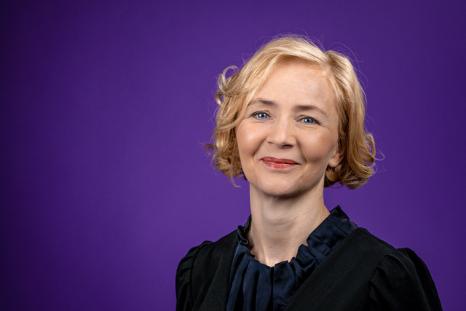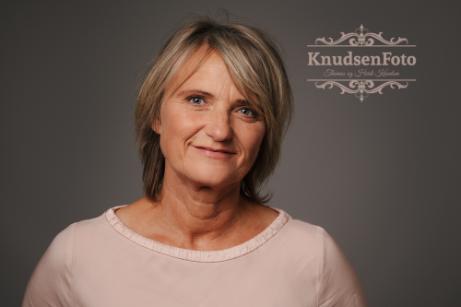Keynote Speakers
Suzanne Beeke

What does participation in collaborative activities look like when you have aphasia and how can communication training underpinned by conversation analysis help?
Wellbeing is mediated through active participation in the collaborative activities that make up our life-worlds. Adults with aphasia are acutely aware of the impact of their communication difficulties on life participation, and they tell us that having complex conversations about their opinions and emotions is a rehabilitation goal. Whilst exclusion from active participation can occur, much of the time the situation is more one of restricted participation. This can be due to the impact of their limited interactional resources on conversations, and the ways in which their interlocutors shape activity frameworks. I will explore the idea of activity frameworks (i) supporting people aphasia to actively collaborate because they permit and scaffold divergence from typical interaction, and (ii) restricting participation by creating the need to break free of the activity framework to do something else interactionally. I will outline the Better Conversations approach to training dyads to adapt their interactive practices, which is underpinned by our conversation analytic understandings of collaboration and participation, and discuss the ways in which this work is being influenced by a focus on situated activities such as participatory art.
Suzanne Beeke is an Associate Professor in the Division of Psychology and Language Sciences at University College London, and a qualified speech and language therapist. Her research focuses on communication disabilities such as post-stroke aphasia, traumatic brain injury and dementia, and she explores their impact on everyday conversations in the home and on healthcare interactions. She leads the Better Conversations Lab at UCL. Better Conversations is an approach to the study of conversation in communication disability, and a growing suite of intervention programmes, pioneered by UCL and underpinned by the principles and methods of Conversation Analysis.
@BCAphasia
Better Conversations Lab
Camilla Lindholm

Creativity, engagement, and limitations. The case of multi-party interaction and dementia
Previous research has reported that persons with dementia communicate best one-on-one and have difficulties following conversations in which several participants speak simultaneously. Therefore, the group conversations and overlapping stimuli that are commonplace in institutional arenas of care work and support, such as daily activities and long-term care, may cause interaction difficulties for people with dementia. However, these arenas also constitute resources for participation and everyday creativity. This paper reports on the role of the physical and social environment in supporting the conversational participation of persons with dementia. It does so by drawing on video-recorded data from several projects on dementia and interaction, featuring data from multiparty conversations between persons with dementia and professional caregivers. Activities such as games and quizzes are demonstrated to trigger creativity in the form of verbal playfulness and humor, and conversations in the immediate environment are shown to endorse responsiveness and engagement. Finally, this presentation shows how co-participants’ manner of responding sets limitations on how persons with dementia engage in interaction.
Camilla Lindholm is Professor in Nordic languages at Tampere University, Finland. Her main research areas are interaction in institutional settings and asymmetric interaction involving persons with communication impairments. She takes a special interest in applying her research findings in dialogue with society. Among her recent research projects are ‘Easy (Finland) Swedish’ (2021-2024), funded by The Society of Swedish Literature in Finland.
Ali Reza Majlesi

Working out a relevant next in interaction: Co-operative actions with people with late-stage dementia
This study deals with the interpretive work of building actions in interaction with people with late-stage dementia who are unable to speak. Studies of interaction have pointed out that understanding of a prior action is located in the subsequent turns (Sacks et al., 1974; see also Stivers and Rossano, 2010). Action ascription is further defined as “the assignment of an action to a turn as revealed by response of the next speaker” (Levinson, 2012: 104). However, Goodwin (2018) shows that “co-operative, accumulative action occurs not only when one party provides a response to an earlier action that has come to completion, but in the midst of emerging action itself” (p. 55). This draws the attention to understanding action not only as a post-hoc display of a certain category of conduct but also as an interactional achievement rather than a discrete unit produced by a single actor (see also Enfield & Sidnell, 2022). Drawing on conversation analysis and multimodal analysis of interaction (e.g., Goodwin, 2018; Mondada, 2021), I will show how interaction with a person with late-stage dementia is co-operatively and accumulatively shaped through ongoing monitoring and testing the boundaries of actions. The results of the study are based on the detailed analysis joint activities with people with late-stage dementia. The findings point to response making procedures as sense making activities which involve a continuous work of resolving the indeterminacy of action through following procedures: the relevancy of the next action is somewhat settled through working out the embodied display of intent by either testing the relevancy of the next action or soliciting confirmations before making the next move. Unresolved determinacy of actions is managed by other practices including aborting an ongoing action (often for a restart) or self-responding to the owns’ prior action to move on in the activity. The implications of the study point to the distribution of accountability not only for understanding a single action but its production, and also understanding “agency” as a socially distributed and embodied achievement in interaction.
Ali Reza Majlesi, PhD. in Language and Culture, is an Associate Professor at the Department of Education at Stockholm University, Sweden. He conducts research on social interaction in both every day and institutional settings with participants with various cognitive and communicative abilities. His research focuses on embodiment and meaning making practices in social activities. His interests lie in communication, health and pedagogical practices. He draws on ethnomethodological conversation analysis and multimodal analysis of social interaction. His main project deals with communication with people with dementia, which is conducted at the Center for Dementia Research (CEDER) at Linköping University, Sweden.
Gitte Rasmussen

The impact of mobilityimpairments on participation and interaction
The ability to walk is an expected background feature of ordinary social interaction(Garfinkel, 1964).Social activities andphysical environmentsare arranged presupposingtypicalmobility function and consequentially excluding individuals with mobilityimpairments from engaging with environments and participating in activitieson equal terms with individuals without impairments if they participate at all.
The International Paralympic Committee’s organization of wheelchair sports, andsome institutions’ and organizations’provision of lifts and ramps for wheelchair userstestify to the fact thatmobilityimpairmentsimpactsocial life and activities. This talk concerns how mobility impairmentsand use of wheelchairs impact interaction andparticipation in sports activities in a sports high school in Denmark.
The talk is based on an ongoing study of sports students’ interaction with technologies (Sørensen et al., 2016), visiting researchers, instructors, teachers, and other sports students in the sports high school and in a sports lab at the University of Southern Denmark. Most of the involved students suffer from Cerebral Palsy (CP)(Colver et al., 2014). CP may impact cognitive functioningand abilities in speech, language, and communication(Clarke and Wilkinson, 2008). Additionally, it may impact physical functioning.
The talk concerns specifically aspects of how wheelchairs impact the users’participation in social sports activities in a gym and in a sports hallin the high school.It examines hownon-wheelchair usersconfigure interactional spaces (Mondada, 2013),that pre-beginexchanges of talk and activities,in interaction with the wheelchair users.Additionally, it touches upon the co-participants’ practices for terminating interaction and dissolving established interactional spaces (e.g., Broth & Mondada2013; LeBaron & Jones, 2002).
The study is situated in aframework I have described elsewhere asEMCA studies of Atypical Multimodal Interaction(Rasmussen, (under review)). It directs its attention to how co-participants in Atypical Interactionconfigure focusedand unfocused interaction (Goffman, 1963) by drawing on and orienting to talk, gaze, gestures, bodily movements, objects, as well as physical environments (Goodwin, 2011).
The study draws on data, collected by the Tri-Disciplinary Contexture for research in Motion, Technology, and Humans (TRINITY) at SDU, in terms of video-recorded interactions in the sports high school. The recordings were transcribed usingconventions for multimodal transcription (see e.g., Mondada, 2014; Hepburn and Bolden, 2012)
Gitte Rasmussen is a Professor of Social Interaction at the Department of Language and Communication at the University of Southern Denmark. She conducts EMCA studies of interaction with an interest in how participants gear their actions into the social environment and draw upon available modes and modalities for the purpose of action construction, e.g., talk, bodily movements, material objects, and digital and robot technologies. She is especially involved in research of social interaction that involves persons with language, cognitive, and physical impairments. She has done research in interactions involving e.g., persons with dementia in care facilities in Denmark. She is e.g., co-editor of Atypical Interaction: The Impact of Communicative Impairments within Everyday Talk. Palgrave Macmillan (with Ray Wilkinson and John Rae) and author of chapter 6 Singing as a resource in conversations involving persons with dementia.
Gitte is currently conducting an interdisciplinary research project on if and how robot technology can be drawn upon in gait training for patients with gait disorders and if and how it can be used to create possibilities for young adults with physical (gait) impairments to participate in sports activities.
